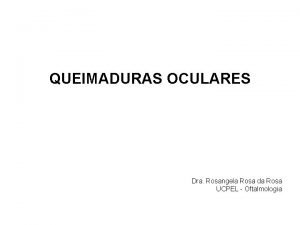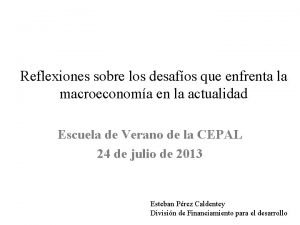ADASS 2003 A Modigliani M Rosa Poster under
![[ADASS 2003 A. Modigliani & M. Rosa] Poster under http: //www. stecf. org/poa/PF_STIS. ppt [ADASS 2003 A. Modigliani & M. Rosa] Poster under http: //www. stecf. org/poa/PF_STIS. ppt](https://slidetodoc.com/presentation_image_h2/8b705b5d4d5c166a58717adf2074cddc/image-1.jpg)
- Slides: 1
![ADASS 2003 A Modigliani M Rosa Poster under http www stecf orgpoaPFSTIS ppt [ADASS 2003 A. Modigliani & M. Rosa] Poster under http: //www. stecf. org/poa/PF_STIS. ppt](https://slidetodoc.com/presentation_image_h2/8b705b5d4d5c166a58717adf2074cddc/image-1.jpg)
[ADASS 2003 A. Modigliani & M. Rosa] Poster under http: //www. stecf. org/poa/PF_STIS. ppt Proceedings text under http: //www. stecf. org/poa/PF_STIS. pdf Evaluation of methods to locate emission lines from calibration lamps in 2 D spectroscopic data Andrea Modigliani and Michael Rosa 1 2 1) Data Flow Group -European Southern Observatory Garching, Germany 2) Instrument Physical Modeling Group - Space Telescope European Coordination Facility contact: amodigli@eso. org, mrosa@eso. org Instrument Physical Models are used to understand predict the behavior of instrument modes – to be used in operations and calibration Applications: 1) ESO VLT UVES and FLAMES-UVES: a) Exposure Time Calculator to predict the spectral format, b) in the pipeline to automatise the data reduction. 2) Hubble Space Telescope Imaging Spectrograph (STIS), wavelength calibration of all data taken with 3 different detectors in a multitude of modes Experience shows that the model allows to distinguish between geometric (camera) distortions, inaccurate values in laboratory wavelength catalogues, and inaccurate description of the instrument on a 0. 1 pix scale over many thousand pixel across. This makes it indispensable to be able to obtain the positional measurements of features (lines) with comparable or better accuracy and repeatability even under circumstances of low signal to noise. We have analyzed several methods and code implementations of line search and centering algorithms on STIS FUV MAMA wavelength calibration data in the E 140 H echelle mode with their typical very low signal of only a few counts per pixel. . Here we summarize results by showing residuals between the line centers obtained by differing centering methods and the predicted centers from one and the same model. Diff Y (pixel) Pos Y Pos X Start: using a 2 D Gaussian shape Diff X (pixel) Shown are point distributions of differences between measured and predicted line centers Levenberg-Marquardt algorithm. Chi 2 minimization fitting criteria Diff X (pixel) Next - Find a better description for the line shape F=a 0*exp(-a 4*X^nx)*exp(-a 5*Y^ny)*exp[-(X-a 7*Y^np)^mp]+a 1 X=[(x-a 2)*cos(a 6)-(y-a 3)*sin(a 6)] Improvement Y=[(y-a 3)*cos(a 6)-(x-a 2)*sin(a 6)] a 0, a 1, a 2, a 3 free a 4=0. 105, a 5=7*10^-6 a 6=175 deg nx=2, ny=6, mp=2, np=2 Data: raw, smoothed shape, contour plots Bended gaussoid Model closer to data Model: Bended gaussoid Diff Y (pixel) Pos Y Pos X Improvement: gaussoid shape and maximization of model-data correlation Diff X (pixel) Provided 5 Tools / IDL GUI to ease profile shape and fit analysis Summary: The main source of the rather large residuals between STIS FUV MAMA E 140 H wavelength calibration data and predicted positions from a STIS echelle Model is the inability of the fitting routines to precisely locate the noisy extended calibration lines. Improvements can be obtained when using a constrained gaussoid model for the line shape with different exponents along X and Y direction, and in addition when correlating the model to the data.

